PROS
The most fun phone camera in the world for photographers; superb low-light camera performance; long battery life
CONS
Camera overexposes images occasionally; 1080p screen resolution is an odd fit at the price
PRICE
£899
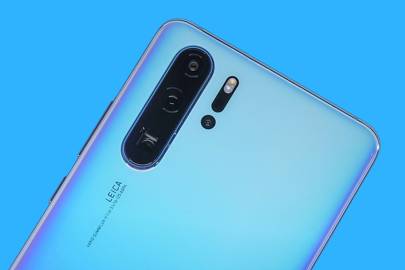
Huawei’s transformation from Chinese underdog to a company sat up with Samsung and Apple, one of the smartphone superpowers, is almost complete. There are good and bad elements to this, and they are all visible in the Huawei P30 Pro.
This latest Android phone has exciting and advanced features that, in the camera at least, shift the limits of what phones can do. The Huawei P30 Pro is the most flexible, versatile mobile money can buy for photography.
The price is a head-scratcher in one specific context, though. Huawei’s Mate 20 Pro is as advanced a phone in most respects, has an even sharper screen and is available for less money thanks to natural price erosion.
Huawei has copied the Samsung upgrade cycle. But as the Mate series doesn’t have as distinct an identity as Samsung’s Note, the P30 Pro and Mate 20 Pro are uncomfortably competitive siblings.
Internal politics aside, the Huawei P30 Pro is one of the most impressive phones in the world, by any metric.
Camera
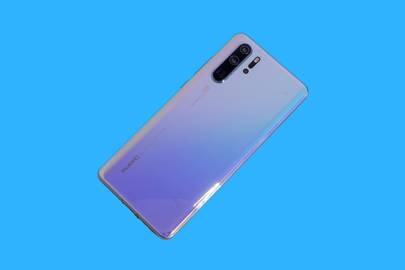 The camera is the one area where Huawei has managed to maintain the momentum of progress it established with the Mate 20 Pro. It has three traditional cameras on the back, and one of them has a 5x “zoom” field of view. The older Huawei Mate 20 Pro has a 3x lens.
The camera is the one area where Huawei has managed to maintain the momentum of progress it established with the Mate 20 Pro. It has three traditional cameras on the back, and one of them has a 5x “zoom” field of view. The older Huawei Mate 20 Pro has a 3x lens.
A quick look at the lens demonstrates how much of an engineering achievement this is. Its sheer magnification makes the lens seem to extend far beyond the depth of the Huawei P30 Pro’s 8.4mm thickness.
Lens aperture is the sacrifice. This is the width of the opening, and the “zoom” lens’s f/3.4 aperture sounds extremely narrow for a phone. The sensor itself is only an 8-megapixel 1/4-inch chip. Lens aside, this is the kind of camera hardware you might see in a selfie camera.
However, the most important effect is here in spades. Many phones with zoom lenses have 2x magnification, and aim to simply solve the issue of digital zoom’s huge image quality degradation. Here, the magnification is so powerful, objects that might barely be noticed in a standard photo can become the subject. As the Huawei P30 Pro also has a powerful 16mm equivalent ultra-wide camera, the variety of images you can take from one position is quite astonishing.
Excellent optical stabilisation makes shooting images handheld at 50x fairly easy, in daylight at least. Switching between the four primary views (x0.6, x1, x5, x10) is quick and bug-free. And considering its relatively low-end hardware, the Huawei P30 Pro’s 5x zoom camera takes good-looking images.
The ultra-wide is excellent too. Its lens is sharp, images are detailed and even at the corners optical distortion is relatively minor. It also automatically compensates for the lens’s vignetting. As in the Mate 20 Pro, the wide has autofocus and can be used for macro photography. The Samsung Galaxy S10+’s wide has a fixed focus, making it far less versatile.
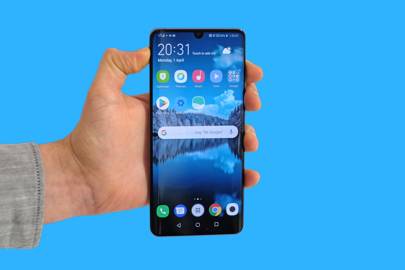
Huawei’s aggressive exploitation of camera hardware and software is peerless and its innovations are arguably more meaningful than those on the Nokia 9. That phone uses a whole team of cameras to improve image quality and dynamic range, but Google and Huawei have already catered for these with clever software and multi-exposure techniques.
Google tried to emulate “optical zoom” with software too, in the Pixel 3, but the Huawei P30 Pro is in a different galaxy in terms of zoom capability. Huawei is, for now, the one manufacturer that seems to “have it all”.
Actual image quality is up to Huawei’s recent high standards. Dynamic range optimisation is great, detail is excellent and night photo quality is the best available. The phone has a Night mode that takes several seconds to capture an image, but even using standard shooting pictures look detailed and fairly clean. The main camera has a 40-megapixel sensor that uses pixel binning, resulting in clear 10-megapixel images in any light conditions.
Mount the Huawei P30 Pro to a tripod, or against a hard surface and the Night mode auto-senses the stillness and takes 50 seconds to capture an image. At the phone’s launch Huawei seemed to suggest this would let the phone shoot the milky way by pointing towards the sky. You’re far more likely to just get a better-than-average look at some light pollution, but the camera is impressive regardless.
Use the pro mode and you can set sensitivity to a ridiculously high ISO 409600. In anything but a dark room this turns images into blocks of white, but it makes night scenes appear much clearer than they are to the naked eye. Images are rather soft, but surprisingly usable. Given how photos from full-frame cameras often look at this ISO level, it makes you wonder what a DSLR with this level of processing could do.
The Huawei P30 Pro’s selfie camera makes excellent use of unusually high-resolution 32-megapixel sensor. In good light, selfies are extremely detailed. And it appears to use pixel binning in lower light to maintain clarity. This is also important for the face unlock feature. It lets its face recognition work in low light.
Camera weaknesses
This camera is not perfect, though. With all these smarts, and versatility no other phone can currently touch, why does the Huawei P30 Pro still struggle with some of the basics?
Judging exposure is its one major weakness. It tends towards overexposure too often. When shooting some ducks with the 5x zoom, we had to set the exposure slider to -1.5EV just to stop their off-white bodies becoming blobs of pure white. An iPhone just wouldn't do this. Switch between the three cameras and you’ll also notice the colour handling of the wide and standard views is often significantly different.
Occasional blips aside, the Huawei P30 Pro is a thoroughly impressive camera. And after returning to the Huawei P20 Pro for a shooting trip to Stockholm the week before using the P30 Pro, the progress Huawei has made is undeniable. That previous gen model was groundbreaking, but its processing seems heavy handed and unrefined next to the P30 Pro’s.
This is the best phone camera in the world right now for zoom and extreme low-light photography.
There’s almost too much to cover in the Huawei P30 Pro camera — we haven’t even touched on its unusual main sensor, which has red, yellow and blue pixels instead of RGB ones. In low light, it's terrific though it may also be responsible for the difference in colour tone between cameras.
Future-proofing
The ToF (time of flight) camera does deserve a mention, though. This is a fourth camera, a depth sensor that uses an infrared emitter to draw a depth map of the environment. As the excellent background-blurring Aperture mode works when the ToF camera is completely blocked, it is either not used for photography at all, or is a secondary depth aid.
The real usefulness of ToF hardware will only become apparent later in 2019. Augmented reality is the obvious application, but Google’s ARCore does not use it yet. Samsung left ToF hardware out of all S10 phones bar the Galaxy S10 5G, in part because it’s not a necessary feature yet. Whether this future-proofing is actually important depends on whether Google can make AR seem more important and useful than it is now.
Video is where the Galaxy S10 series takes a lead. The Huawei P30 Pro can shoot video at up to 4K 30 frames per second, and slo-mo at up to 960fps. But the Samsung Galaxy S10 can shoot 4K at up to 60 frames per second, and has an ultra-stabilised mode that is much more effective than the P30 Pro’s, with a slight hit to image quality.
Battery life
Those weighing up the Huawei P30 Pro against a Galaxy S10+ also need to consider battery life. This phone outlasts the UK S10+ model by quite a margin. Its 4,200mAh battery weathers through a full day of heavy use, or most of the way towards two days of light treatment.
This is largely down to processor optimisation. The UK Galaxy S10+ has an Exynos CPU with poorer power management than the US Snapdragon version. This is frustrating for UK buyers, and even the Qualcomm model would likely struggle to keep up with the Huawei P30 Pro. Battery life really is excellent, just like the Mate 20 Pro’s.
Screen
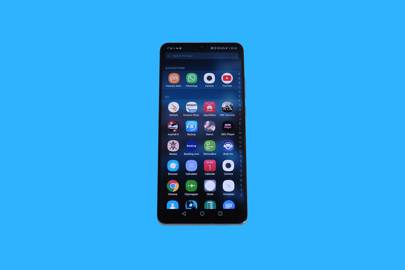
The screen is the one part of the P30 Pro’s spec sheet that stands out as a potential negative. This is a 6.47-inch 2340 x 1080 pixel OLED screen with a smart-looking teardrop notch. It’s significantly lower res than the displays of the Galaxy S10+ or Mate 20 Pro. The difference is perceptible - up close the screen has a slight characteristic OLED fizziness to it.
This is not evident in normal use, though, and the screen is otherwise excellent. It’s bright, colourful, contrast is near-perfect and borders around the screen are small. The notch is relatively unobtrusive too.
An all-screen front makes it seem there’s less going on here than in the iPhone XS Max or Mate 20 Pro. They have a selection box of sensors above the display. But there are some unusual parts here too.
Huawei continues to push invisible sub-screen tech too. The Huawei P30 Pro has an in-screen fingerprint scanner like the Mate 20 Pro, and this one is quicker and more responsive. It’s even faster than the Galaxy S10+’s, despite using an optical sensor rather than Samsung’s “newer” Ultrasonic type.
The phone’s call speaker sits behind the screen as well. There’s no traditional driver. Elements of the screen itself vibrate to create sound. It works very well in real life, but functions more as an odd techie anecdote than a reason to go out and buy the Huawei P30 Pro.
Design and performance
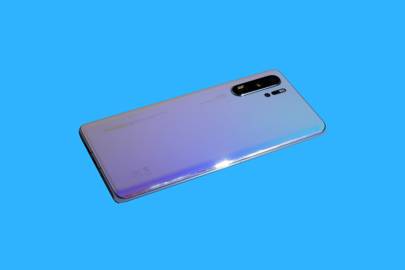
Every other part of the phone is business as usual for a top-end model. It has curved, toughened glass on its front and back, aluminium on its sides. Luxury is pedestrian at this price. Huawei has tried to give the phone a distinct visual personality with some bolder finishes with three colourful versions, including 'breathing crystal' seen here, and both black and pearlescent white for those after a lower-key look.
IP68 water resistance makes the Huawei P30 Pro among the most water resistant phones available. And while its EMUI software and Kirin 980 CPU offer nothing new - EMUI is still not quite as polished and clean as iOS or Samsung's One UI - the smooth, quick day-to-day performance fits the price. There's no 5G, that's tied to Huawei's Mate series.
0 Comments